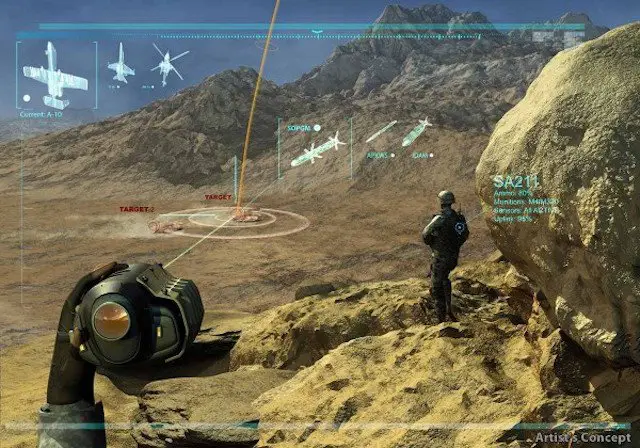Breaking news
Raytheon completed the flight tests for DARPA’s Persistent Close Air Support programme.
| a | |||
|
|
|||
|
World Defense & Security Industry News - Raytheon
|
|||
|
|
|||
| Raytheon completed the flight tests for DARPA’s Persistent Close Air Support programme | |||
|
Raytheon has completed the flight tests phase for the development of the DARPA’s Persistent Close Air Support (PCAS) programme. The company, which is the systems’ integrator, demonstrated the system’s end-to-end capabilities during a USMC exercise.
|
|||
|
|
|||
 DARPA's Persistent Close Air Support program concept DARPA's Persistent Close Air Support program concept(Credit: DARPA) |
|||
|
|
|||
|
The PCAS programme started in 2010 in order to address the deficiencies associated with Close Air Support (CAS). During those missions Joint Terminal Attack Controllers (JTACs) have to coordinate aircraft using voice and basic maps. They can only focus on one target at a time, while the whole process takes up to one hour.
DARPA’s PCAS aims at reducing the time needed between calling an airstrike and the target being hit to almost six minutes; at directly coordinating airstrikes by a ground agent; by improving speed and survivability of ground forces; at using smaller and more precise munitions in reduced visibility conditions, against mobile enemy forces and at having back-up support in case one system fails. PCAS is designed to be platform-, digital radio-, sensor-, and weapons-class agnostic, and to be portable from platform to platform. The two main parts of the system are PCAS-Air, which consists of smart launcher electronics and a pilot tablet, and PCAS-Ground, which comprises the equipment used by the JTAC. The USMC put the system into testing during the Talon Reach V exercise in March and May 2015. PCAS demonstrated its efficiency at all stages by digitally releasing a Griffin missile from a modified Bell MV-22 Osprey and A-10C Thunderbolt II. Both sides, the ground controller and the pilots/aircraft used PCAS’ real-time digital communications and situational awareness capabilities, successfully employed 10 GPS and laser-guided weapons in a second series of flight tests. |
|||



















